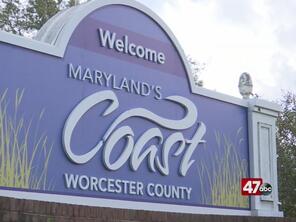The inequity of our health system There are perhaps no greater concerns on the forefront of people's minds than making sure they are healthy (or at least it should). No one would ever want their child getting ill, or their older, more vulnerable loved ones catching a cold that can well threaten their lives. However, another concern some people may not realize is the equal treatment and care they are given... or in some cases, not given. Isabel Estrada-Portales' article Drylongso argues that even through our current strife of the COVID-19 pandemic, colored communities still receive unequal and lower quality treatment and care from health-care providers (2020). While we still are working towards true equal treatment of people in the social context, we must still remain vigilant and exercise equality in every dynamic of society, perhaps most especially our health-care system. As the author points out, "Racism is not simply ignorance or not knowing, and we can’t fix it with acknowledgment and moral commitment alone" (2020). It requires that society must commit to the necessary achievement of equality by exercising practices and care that all people deserve and need in order to get well. If we cannot do that, the health risks not just escalate due to the mistreatment of the health problems, but so does the health risks that stem from racism and prejudice. ( Click the picture below to get taken to the article ) To establish the necessary communication tactics, I once again look into the suggestions of the author. In her recommendation, she suggests that: "Researchers, activists, individuals, community health workers, public affairs and health communications officers, and reporters should ask themselves and others different questions about how our world works, and how it can be transformed, at its core" (Estrada-Portales, 2020). Per her suggestion, it's not about simply the awareness of the issue, but the dedication of driving the narrative that the issues at hand are real and affect many members of many communities. We must continue to push it to the forefront, and challenge journalists, truth-seekers, researchers, and other people similar to not remain silent on their findings. We must task ourselves to be open and transparent to all patients and community members, on all social and physical platforms, about the dedication, promise, and commitment doctors, nurses, and other similar works of people will do to eliminate any bias and prejudice from practices to ensure true, genuine equal health care for all. The vulnerabilities of Worcester County, MD According to the CDC's Social Vulnerabiity Index, Worcester County is fairly low in its ranking, with a score of 0.2884. While the socioeconomic is the lowest vulnerability according to the data at a 2.557, Housing/Transportation is the largest vulnerability, at almost 5.0. To me, this issue strangles the community in terms of opportunities, especially those in lower/low-middle income households. Relating to my last blog post, this acknowledgement of a transportation issue shows that people who may be vulnerable, at-risk, or already are using opioids, may have a hard time getting to the places they need for the help they require. The data map can be found here: Link According to the excel sheet containing the data of SVI totals for Maryland, one of the numbers that sticks out that's alarming, in relations to all counties, their populations and the amount of people who live below-poverty are relatively high. The document can be found just below this text:
Taking a step back to view the larger picture, even as America spends a significant amount of money on health care, we trail far behind other countries that spend far less than we do, per capita.
For an even thorough analysis, the following document highlights even more areas of America falling critically behind in comparisons, both domestically and internationally. In one critical highlight, the document titled Unnatural Causes points out that kids who are born in overwhelming poor houses are at least several times more vulnerable to develop health conditions, and grow up to become poor themselves. More information to this can be found in the below file.
 When it comes to piecing the puzzle together, the underlying health and social justice issues that Worcester Country faces is equivalent to a ticking time bomb. With a sizable population unemployed and the statistics to back up that children will be in ailing condition and financial stress, it creates a vicious cycle and explains why housing and/or transportation issues can arise in such circumstances. They can follow the advice given to health providers, but only if there is a large change in the systems that are in play that keep our children in poor conditions, and ill provides the community of Worcester County the necessary needs. While we must highlight areas of the community in need of assessing of who receives more resources to satisfy the growing needs, we must also be considerate to how we ultimately treat the community by doing so. The article best to highlight this is titled Exploring the concept of vulnerability in health care' by Beth Clark and Nina Preto. When we blanket communities such as 'vulnerable', we might be giving it the much needed protection from those who are more well off, but we could also be putting a label of stigma and broaden control of said areas (Clark & Preto, 2018). To best summarize, Worcester can be duly noted as a hard working, rural community that has its unique strengths, while also looking to help bolster said community with opportunities for housing and fairer public transportation. By wording with positive words and not painting the negatives in flowery language, it treats the county and its residents fairly. The article mentioned here can be accessed here:
Communication and CommunityCommunication can play a huge impact on improving the housing and transportation issues Worcester County faces. For one, I'd advocate for community leaders and groups to focus on being transparent about the issue to their local mayors and their branches. Only through express, sincere demonstration of highlighting these issues can action start to fix these problems. One big change that could happen is nominating someone, an already established community leader or well respected person of Worcester, to lead this charge to raise awareness to both the broader Recommendations of action For those who are more interested in some of the alarming statistics of Worcester County, compared to the rest of the U.S. and Maryland, check out the following fact sheet below:
One feasible, easy recommended action that could be possible for me to do would be to provide a petition to our local offices so they can see the amount of people who are in support for this. By doing this, this will communicate a clear need, a call to action, for those to not only voice their concerns, but to give those who were previously disadvantaged a chance to get the much needed help they need so they too can find equal social justice. This will have in the long run, a vision and path to overall health improvement to treat others more fairly, a road for us to right previous wrongs. All in the hopes that the symbol, the Rod of Asclepius, is balanced for all, and not tilted for others.
0 Comments
Your comment will be posted after it is approved.
Leave a Reply. |
Author
Senior at Salisbury University, working towards a Bachelor's on Community and Professional Communication. |
||||||||||||||||||||||||||||||




